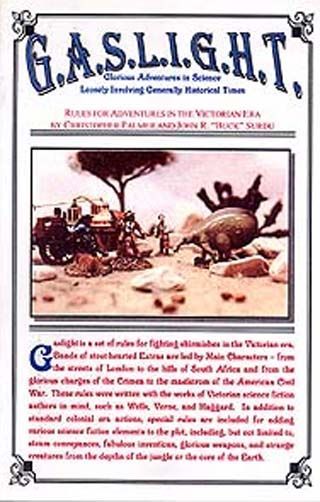Sometimes you want a board game that turns your living room into a smoky Victorian parlor, filled with suspicious glances, laughter, and the occasional fake mustache. Well, that’s what happened when I tried to review Gaslight with my friends. In this review, I’ll spill the tea on everything—theme, mechanics, sneaky moves, and whether the only thing getting played is the game itself (or your gullible brother-in-law). Grab your monocle, it’s about to get sneaky!
How It Plays
Setting up
To start Gaslight, lay out the board and shuffle the suspect cards. Give each player a character card (face down, no peeking—seriously, I learned that one the hard way). Deal out evidence tokens and suspicion markers to everyone. Place the remaining cards in a draw pile. Set the mood by dimming the lights or making your best dramatic sighs.
Gameplay
Each turn, players try to convince everyone else they’re innocent (or a genius villain, depending on your card). You’ll trade clues, place suspicion markers, and use cards to mess with your friends. The heart of Gaslight is bluffing and deduction. While you talk and accuse, watch out for the clever ones—they’re probably gaslighting you! Each round, people reveal a little more… or just act suspiciously.
Winning the game
The game ends when someone gathers enough evidence to prove a player is guilty—or manages to successfully pin the blame on someone else. Victory goes to the true detectives if they find the villain, or to the sneaky gaslighter if they escape discovery. Either way, expect lots of shouting and at least one person claiming they were framed (it was probably me).
Want to know more? Read our extensive strategy guide for Gaslight.
Gaslight: Victorian Vibes and Suspicious Side-Eyes
If you enjoy pretending you live in a foggy London street and constantly accusing your friends of being the worst, Gaslight will tickle your fancy. The game oozes with Victorian flair. The artwork is all smoky top hats, flickering gas lamps, and suspicious faces peering through misty windows. I wore my best thrift store vest while playing, but my friends said I still looked like a 21st century dork. Atmosphere: nailed, Jamie: less so.
Gaslight’s main draw is its theme: you’re trying to unmask a villain hidden in your midst—or at least pin the blame on someone who looks guilty. There’s serious tension as everyone glances around the table, clutching their clue cards and pretending they don’t have a poker face worse than my Aunt Shirley at family poker night. The game box even smells a little mysterious (that could be my cat, but let’s not investigate further).
The designers clearly put effort into drawing you into a world of secrets and accusations. There are story snippets on the cards and dramatic events that pop up every turn. The rulebook even has a tiny blurb about the history of gaslighting, which would be neat if any of us bothered to read it, instead of arguing about who is acting shadiest.
I like that Gaslight doesn’t take itself too seriously. It lets players argue, joke, and (very theatrically) accuse each other of deceit. You can get into character or just enjoy the ride. Either way, it creates a fun and slightly paranoid mood that keeps everyone on their toes. Next up, I’ll poke around the fog and talk about what really matters—how Gaslight plays and if the rules are as fair as a Victorian pie contest.
How Gaslight Plays: Mechanics And Balance In The Parlor
Let’s talk mechanics—and no, not the kind that fix your carriage. Gaslight uses a mix of deduction, bluffing, and a little bit of sneaky backstabbing. You’re all suspects at the table, each with your own goals and secrets. The cool bit? You take actions to “illuminate” clues or “shade” the truth, all while hunting the real villain. Everyone’s busy, pretending they’re not the bad guy. (Spoiler: I’m always suspicious, even when I’m innocent. My friends say it’s the eyebrows.)
Each round, you choose from actions like exposing another player, peeking at clues, or manipulating gossip. These actions cost you resources, so you really have to think, ‘Do I risk my reputation, or hold onto it for the next juicy rumor?’ Gaslight makes you sweat a little. If you go all-in too early, you’re toast. But if you’re too sneaky, you might miss your chance. It’s a balancing act. The flow of the game keeps everyone on their toes, and that feeling when someone suddenly reveals a crucial clue? Chef’s kiss.
Now, let’s talk balance. Luckily, Gaslight doesn’t rely too much on pure luck. Sure, there’s some random clue drawing, but most of the time, your choices matter more than the cards. That’s huge in my book. I hate spending an hour plotting just to lose because of one bad draw (I’m looking at you, Monopoly!). Still, sometimes one player can gang up by forming alliances or targeting the quietest at the table, which can feel a bit rough. It’s not perfect, but it’s way better than most social deduction games for balance.
Next, we’ll stir the teapot and talk about player interaction and how you can outfox (or annoy) your friends in Gaslight!
Mastering Mind Games: Player Interaction and Strategy in Gaslight
If you think you know your friends, Gaslight will prove you wrong—and possibly insult your sweater choices along the way. This game is all about reading people, second-guessing your own sanity, and testing if you can keep a straight face while accusing your cousin Edna of being a serial bluffer. It’s a social playground where everyone’s poker face gets a serious workout.
The core of Gaslight is its constant back-and-forth. Every round, you throw suspicion, cast doubt, and claim your innocence while side-eyeing your best mate who suddenly seems a bit too quiet. Table talk isn’t just encouraged—it’s the entire point! I spent half a game convincing everyone that I was harmless, only to be exposed by my own mother, who apparently knows every tell I’ve got. Trust issues? Gaslight might make them worse, but in a hilarious way.
Strategy in Gaslight is sneaky. You have to balance honesty with wild exaggeration. Sometimes it pays to be bold; other times, you want to lay low and let the chaos unfold. The best moments come when you set up a perfect trap—only for someone else to flip the script. Because it’s not just about playing your cards right, it’s about reading the whole table, and maybe planting a seed of doubt in the mind of your most confident opponent.
So if you want a game that will get your friends talking, suspicious, and endlessly plotting against each other, Gaslight delivers in spades. Prepare yourself, because next up, I’m getting my magnifying glass out and picking apart replayability and component quality!
Replayability and Component Quality in Gaslight
Let’s talk about why Gaslight keeps finding its sneaky way back onto my game table. First up, replayability. I’ve played this game more times than I’ve said “It was Colonel Mustard!”—which is, trust me, a lot. There’s something about the mix of roles, secret agendas, and ever-changing player suspicions that keeps every session fresh. Even when I thought I’d mastered bluffing, my friend Chloe called my bluff so hard I nearly spilled my tea. You can swap players in or out and every round feels different. It’s the kind of game where you say, “Okay, one more,” and suddenly it’s midnight.
Now, onto component quality. Gaslight looks sharp out of the box. The cards have a nice, linen finish that survived even after my clumsy cousin spilled soda on them (don’t worry, I cleaned them up right away). The artwork hits that quirky-cobblestone-street vibe without being over the top. Tokens are sturdy—my cat tried to bat one under the fridge and it lived to tell the tale. If you like games where the bits feel good in your hands, Gaslight won’t let you down.
So, would I recommend Gaslight? Absolutely. If you want a game that is just as fun the tenth time as the first, and you like high-quality components you don’t have to baby, Gaslight should be in your collection. Unless, of course, you don’t like fun. But who doesn’t like fun?
Conclusion
Well, that wraps up my review of Gaslight! This game won me over with its charming Victorian vibe, crafty player interaction, and a balance that won’t make you want to fling the cards across the room in a fit of rage. I’ve had some great laughs and more than a few “Aha!” moments with my friends at the table. The components won’t win any fancy art awards, but they do the job well and don’t feel cheap. Plus, the replayability means it won’t gather dust after one night. Sure, it’s not for folks who hate bluffing or messing with their mates, but if you’re up for a clever deduction game where smarts beat luck, Gaslight is a solid pick for your shelf. Until my next review—keep your magnifying glass handy and don’t trust anyone, not even your best mate!


